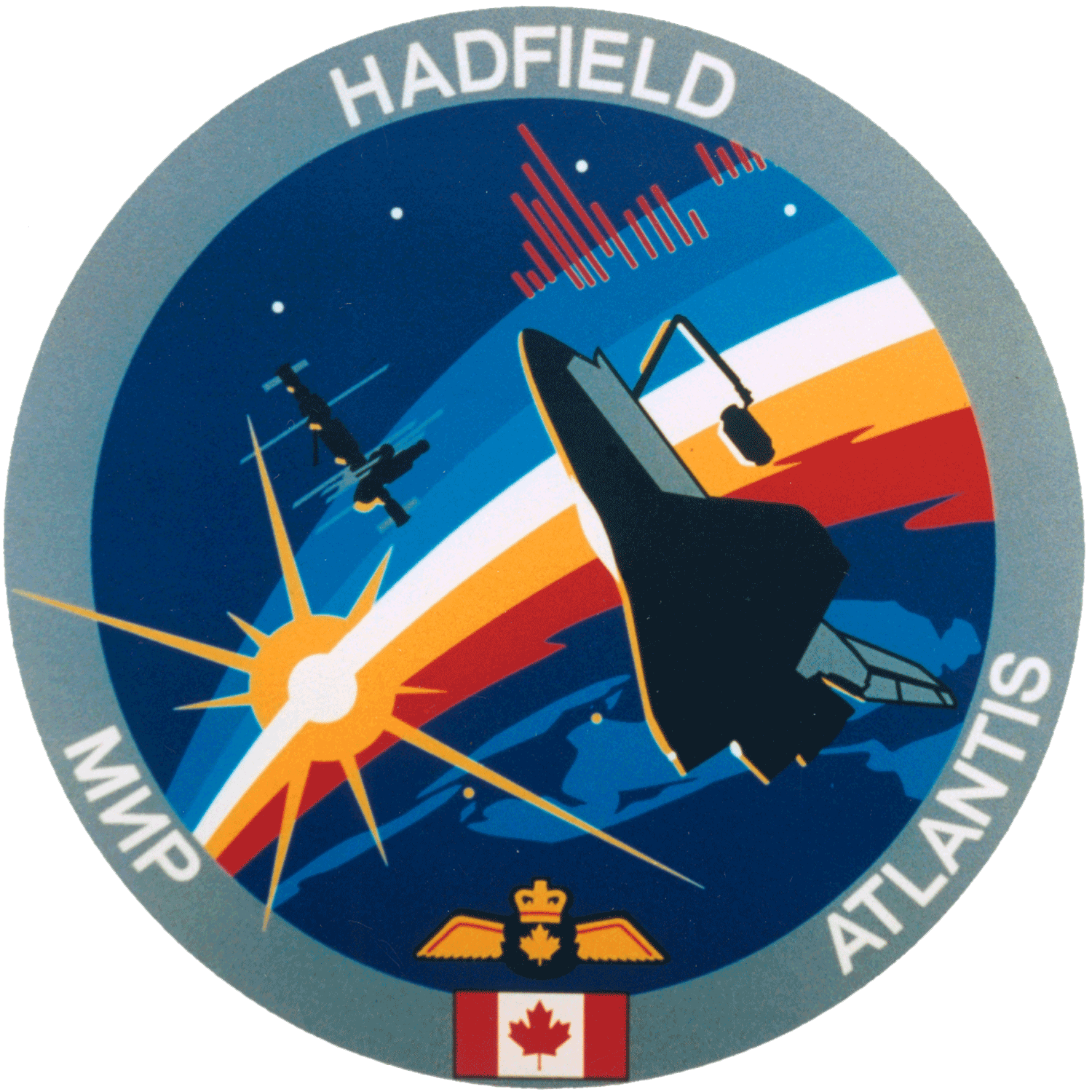Mission STS-074

Mission description

Text version
This insignia commemorates Chris Hadfield's participation in mission STS-74 in November 1995. The Sun rises as Space Shuttle Atlantis approaches the Mir Space Station, symbolic of a new era for spaceflight in Canada: Canadian astronauts living and working on Space Stations. The Canadarm is depicted in a crucial phase of the mission, when Hadfield attached a Docking Module to aport in the payload bay of the Station, permitting the two ships to join.
Canada's Aurora Borealis were visible from Atlantis. Two dots amid Canada's Great Lakes denote Sarnia and Milton, the birthplace and hometown, respectively, of Chris. A representation of his Canadian Air Force wings, superimposed on the scene, demonstrates Hadfield's pride in his military heritage.
The four stars represent the fourth Canadian to fly in space, and the number of finalists in Hadfield's Canadian astronaut class of '92. As well, the stars are depicted as circular dots, similar to the targets that will be used by the Advanced Space Vision System (SVS), a kind of "robot eye" that Canada is providing on this flight.
Along the circumference are the names Mir (in Cyrillic--the Russian alphabet--to honour the cosmonauts who have spent, collectively, nearly nine years in space) and Atlantis. Between them is a Canadian flag, demonstrating a Canadian "bridge" between the two great space powers of the world.
Patch STS-74. (Credit: Canadian Space Agency)
Launch
Date: November 12, 1995
Time: 7:30:43 a.m. EST
Site: Kennedy Space Center (KSC)
Landing
Date: November 20, 1995
Time: 12:01:27 p.m. EST
Site: Kennedy Space Center (KSC)
Mission duration: 8 days 4 h 31 min 42 s
Flight number: STS-74
Orbiter vehicle: Atlantis
Payloads: Docking Module (DM), IMAX Cargo Bay Camera (ICBC), Shuttle Glow Experiment (GLO-4), Photogrammetric Appendage, Structural Dynamics Experiment (PASDE), Shuttle Amateur Radio Experiment (SAREX)-II.
STS-74 was the second in a series of Shuttle-to-Mir Station missions. It also marked the first space flight for Canadian Space Agency astronaut Chris A. Hadfield. While aboard Shuttle Atlantis, Hadfield's most crucial task consisted of attaching the Russian Docking Module (DM) to Mir. Operating the Canadarm—a first for a Canadian astronaut—Hadfield successfully connected the DM to the Orbiter Docking System attached to the Station's airlock. The Canadian-built Advanced Space Vision System was used to perform this assembly task.
After crew commander Ken Cameron guided the Shuttle to Mir Station, numerous supplies were unloaded and delivered, including the delivery of two solar panels and a payload of two experiments. Chris took part in these operations, consequently becoming the first and only Canadian ever to board the Mir Station.
This mission was also notable in that it featured for the first time a crew of Russian, US, Canadian and European astronauts in orbit together.

Mission STS-74 crew
From left to right. Back row: William S. McArthur, Jerry L. Ross, and Chris A. Hadfield. Front row: James D. Halsell and Kenneth D. Cameron. (Credit: NASA)